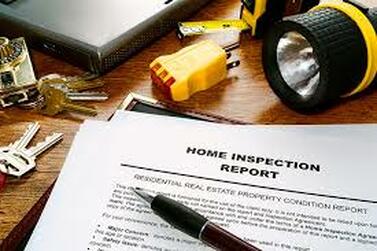
A home inspection is a vital part of every real estate transaction. A thorough home inspection serves to inform prospective buyers about the home they are seeking to purchase. I believe buyers don’t always understand what to expect from the home inspection, and when expectations and reality don’t match up, problems can arise. Read on to learn what you can expect when you hire Wilson Home Inspections to perform your next home inspection.
Home Inspection Defined
First let’s look at the textbook definition of a home inspection. The International Association of Certified Home Inspectors, which I am a member of, defines a home inspection as, “a non-invasive, visual examination of the accessible areas of a residential property, performed for a fee, which is designed to identify defects within specific systems and components defined by (InterNACHI’s) standards, that are both observed and deemed material by the inspector.” (To see InterNACHI’s complete Standards of Practice, click here.) By this definition, a home inspection at its most basic level should provide information about any deficiencies of the major systems of the home. As such, I go through your home from top to bottom with a fine toothed comb looking for any issues, but I think a home inspection should be much more than just a problem seeking mission. I believe that a home inspection can, and should, educate you about the home as a whole, rather than just tell you what’s wrong with it. This is why I strive to provide you with information I believe will help make you a better homeowner. Lets look at information that adds value to your home inspection report.
Locations of Key Components
In the event of a major plumbing leak or burst pipe, do you know where or how to quickly shut the water off? If Wilson Home Inspections inspected your home, that information would be in your report. Do you know the locations of GFCI outlets and which downstream outlets they control? That information would also be in your report. Gas shut-off? Electrical panel? They are in there too! Knowing where to find these things will prevent you the frustration of trying to find them when you’re in a bind, and, if you forget, simply refer back to your home inspection report.
Serial Numbers and Dates
As part of the HVAC inspection, I will open up gas furnaces to look inside at the burner unit. This area is also where the spec plate is that contains important numbers such as model and serial numbers as well as build dates. I note all of these things in the report. If there is ever a problem with the furnace and you need repair parts, or if you can’t remember when the unit was built, you can pull up your inspection report to get the numbers and dates rather than having to climb up in the attic and open up the unit. I include this type of information for the water heaters and AC units as well. It’s just another way I add value to your home inspection.
Maintenance Tips
Owning a home is a great feeling, but it also comes with a lot of responsibilities. One of those responsibilities is keeping the home well maintained. I know at my house it seems like there’s always something that needs to be done. It can be quite a challenge remembering what needs to be replaced or cleaned when. In your home inspection report, I include helpful tips about maintenance and cleaning schedules for different areas of the home. A clean and well maintained home looks more appealing, holds its value better, and will sell faster when the time comes.
Without a doubt, the primary purpose of a home inspection, with regards to the real estate transaction, is to identify any deficiencies the home may have. However, there’s plenty of other helpful information that can be included in the report. In my opinion, that’s what separates good home inspectors from great home inspectors. That’s why I always urge everyone, not just my own clients, to read the full inspection report rather than just skipping to the summary of deficiencies. You might be surprised what you find.

